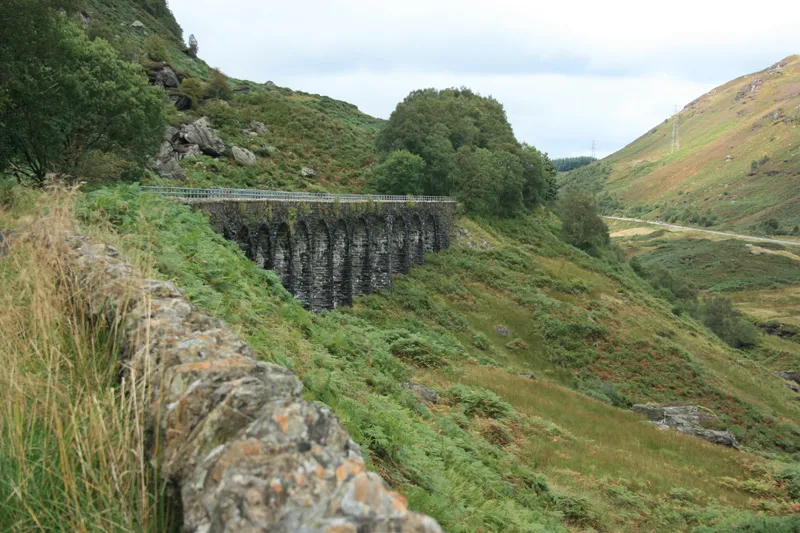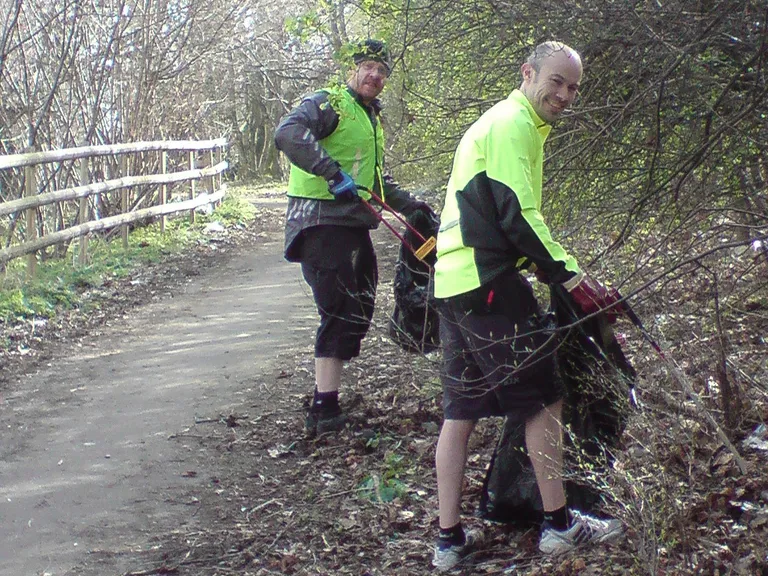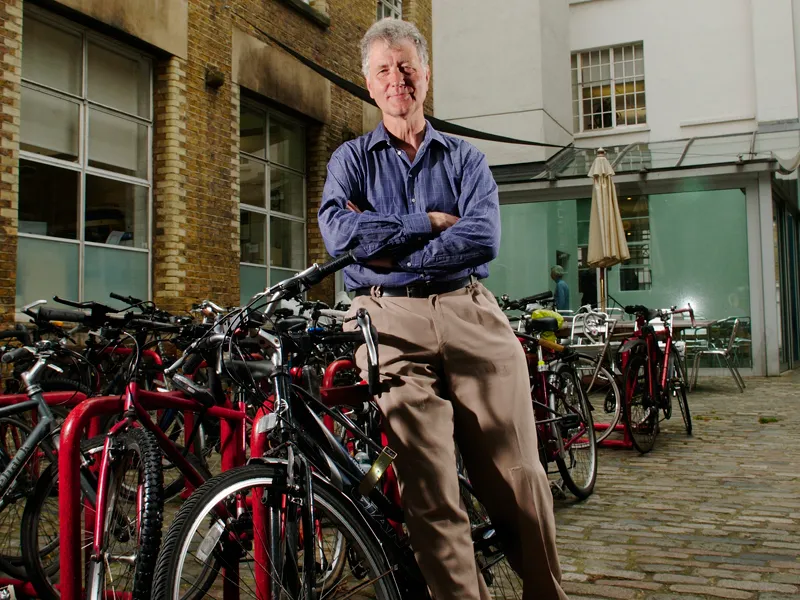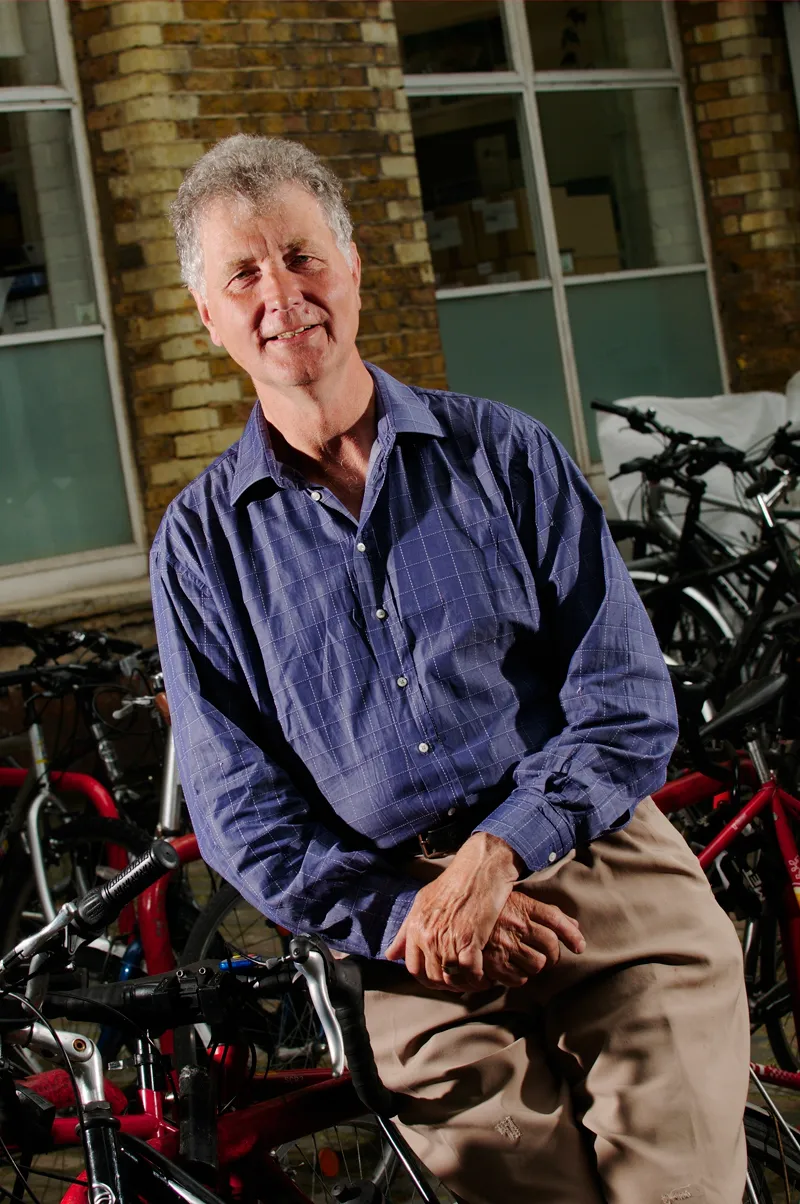John Grimshaw helped turn Bristol cycling group Cyclebag into a UK-wide charity, Sustrans, which counts among its achievements creating the 12,000-mile National Cycle Network. He's now moved on to pastures new, as he explains to Richard Peace.
BR: You're best known for your work with Sustrans and Cycling England. What are you currently working on?
JG: When I stood down from Sustrans, and also left the board of Cycling England, I was able to put a great deal more effort into supporting what is now a programme of 18 Cycling Demonstration Towns.
I currently work as part of the small team of professional advisors co-ordinated by Adrian Lord thorough Ove Arup to support the Towns programme. My role is... to constantly search out what is the most likely difference in winning the public back to cycling. To this end we have encouraged the towns to consider the perspective of those who don’t cycle, and to work through what it will take to persuade them to start again.
I'm also working on Cycling England’s 'Finding New Solutions' programme, particularly on trying to evaluate the role of leisure cycling as a route back to cycling. Although most of us think that one of the first ways to start cycling again is on the leisure journey – perhaps with ones’ family or while on holiday – and that the traffic-free route, such as the Bristol to Bath path, is a valuable place to learn to cycle again, this is far from proven.
We're funding programmes in the Peak District National Park, in Devon and with the Forestry Commission to evaluate this one way or another. In fact, I'd like to appeal for BikeRadar readers' views on how they started cycling; was it something they always did, or were they persuaded in some way or another later in life? [Ed: you can respond in the comments box below.]
What's your opinion of progress so far in the various Cycling Towns – especially in light of the criticism that Bristol has attracted for failing to put substantive schemes in place?
The progress has been varied. There has been a great deal of positive work done, and without exception their status as a CyclingTown has galvanised each into real and positive action. The detailed studies on the first six towns, which started over four years ago, have shown an average increase in cycling of over 25 percent – against a background of no growth in other similar towns – and what's most heartening is that there's been a measurable increase in the fitness of residents as well.
Our experience in getting these projects started is that it really takes about a year – even in quite small towns – for all of the pieces to fall into place. It isn't just a question of having a plan and some funding; crucially you need to assemble a team comprising varied skills who see themselves collectively as owners of the whole project. This team effort is essential and does take time to create.
Bristol are one of the second batch of 12 towns, and it is only this year that their programmes have really got underway. The Cycling Cities also include South Gloucestershire [an area which includes the outskirts of Bristol], who now have no fewer than six construction teams working in a whole series of works which will result in their current fragmentary and incomplete cycle routes being joined up, linked to where people need to go and clearly signed in a co-ordinated strategy.
Bristol have taken a little longer to get going but a huge amount of construction is underway now and I think you'll see real changes by Easter. I'm particularly interested in their programme of work to overcome 'pinchpoints' with their contraflow measures, road closures, new links and so on, all linked by promoting a series of signed routes... which will clearly show the whole urban area; Bristol and South Gloucestershire as one joined-up whole.
Also remember the CyclingTowns programme is very much more than first infrastructure and includes widespread schools programmes through Bikeability, a whole range of soft or smart measures, marketing, bike hire and more or less any initiative which the towns consider will make a difference to the public cycling.

The Bristol to Bath path, pictured at its opening in 1985, was one of Sustrans' first successes
What do you think the future holds for Cycling England and the DemonstrationTowns?
Cycling England can't foresee what policies the next administration will adopt [Britain is due to have a general election this year]. But we believe we've made a powerful case that this investment of £140 million into cycling over two-and-a-half years has been a particularly productive and effective use of transport funds.
You can be sure that our chairman, Phillip Darnton, is giving our future his closest attention! And we certainly would like to see all our programmes continuing, as we know from European experience that it's only through sustained investment, year after year, can we achieve the high levels of cycling they enjoy.
Are there any particular sections of the National Cycle Network you are proud of having achieved during your time at Sustrans?
I'm proud of almost all of the National Cycle Network, and of many paths as well. I suppose it's inevitable that I'm the fondest of the sections which I planned and built; Bristol and Bath, the Pill path from Bristol, the Kennet and Avon Canal towpath and the PlymValley route were all early examples in the West Country.
But lots of paths have poignant memories: building below high tide levels at Bowling along the Glasgow to Dumbarton route where our site office on freezing cold days was the Little Chef nearby; David Kemp’s sculpture along the Johnstone and Kilmacolm path, beside Lochwinnoch on the way to the Ayrshire coast; building the Loch Venachar Path to Callander with volunteers over three wet and midge ridden summers where Dave Holladay brought supplies in by boat... The route through the GlenOglePass was one of the triumphs of our negotiations by Tony Grant, and that’s just in Scotland.
Sustrans itself started with the railway path from York to Selby, and then quickly took on the huge challenge of the Consett and Sunderland route – where tens of thousands of tonnes of coal and ash had to be removed before work could even start – the route from Derby to Melboune which involved a listed viaduct over the Trent, and the extensive network of Mineral railways in West Cumbria which the late John Naylor of Groundwork built so well.
I could go on. The Cuckoo Trail in Sussex had to overcome dreadful soil conditions, while in Wales the first paths were built with large teams from the Government’s unemployed programme at the time, as were many others of these early paths. I'm occasionally stopped in the street by one of the thousand or so men who worked building that early core of the National Cycle Network and I hope they all know what a great work they started.
But perhaps above all, the creation of the Network depended upon the sheer dedication and flair of the pioneers at Sustrans, and the extraordinary support from individual local authority officers, often in the face of less than positive council policies. And of course, winning the Lottery in 1995 [Sustrans received a £43.5 million Millennium Commission Lottery Grant to develop the National Cycle Network] gave us all a new impetus and potent challenge to deliver the routes by 2000.

National Cycle Network Route 7 from Glasgow to Inverness passes over the Glen Ogle Viaduct
With national and local government likely to plead poverty in the future, what types of schemes should be prioritised, in terms of cycling investment?
I think that the future of cycling in Britain lies at the heart of any Sustainable Transport Strategy and as a key component of any drive to get people fit and active again. In this context there will be many initiatives, but for me one crucial one will always be the opening up of town centres by making them permeable to bikes, coupled with extensive urban greenways where the public can cycle in freedom and pleasure.
You can see this in Munster [in Germany], the twin city of York, where 37 percent of all trips are by bike, and where the wide traffic-free promenade for pedestrians and cyclists, which circles the heart of the city on its old defences, lies at the very core of its success.
Why do think the UK is so far behind some northern European countries in terms of cycling levels, and what can we do to catch up?
I've always been amazed that we don’t just look at what Germany, Sweden and Switzerland, for example, have done and accept that high levels of cycling are a consequence of extensive networks of cycle routes such that you simply don’t have to cycle on heavily trafficked roads.
It seems to me that campaigners and government must recognise that, in order to enable a wide swathe of the public to cycle, we simply have to ensure that they have a multiplicity of routes which they consider safe.
This is what I was aiming for in Sustrans, and through the National Cycle Network, namely to give each town in the country a traffic-free route where its popular use would demonstrate to the authorities that the public would cycle if only they were given a chance – that is the achievement of the Bristol to Bath path.
What do you see as the future role of Sustrans, as there are now over 12,000 miles of the NCN complete, and are there any new areas you feel Sustrans should expand into?
In my view there's still so much to do, so many routes to build, and so many towns where works are needed to turn them towards places where cyclists can flourish. I'd like to be able to wake up in my town and know that it's a cycling town, and that it's a town where the citizens have dared to confront the motor car and moved it to a place where transport is not the major emitter of CO2 it is right now and such a potent threat to all our futures.
The NCN has transformed cycling in the UK. How would you like to see its legacy taken forward and protected for the benefit of future generations?
I'd like to see the NCN adopted by governments as an elemental part of the nation’s transport infrastructure. I'd like all transport professionals to recognise its value and to include its development and enhancements in all their plans. But I wouldn't like to lose the role of volunteers, of Sustrans rangers, of community involvement and ownership which will be vital to ensure that the NCN flourishes and plays a timely and vital role in our society.

The National Cycle Network is reliant on the support of Sustrans rangers and volunteers


